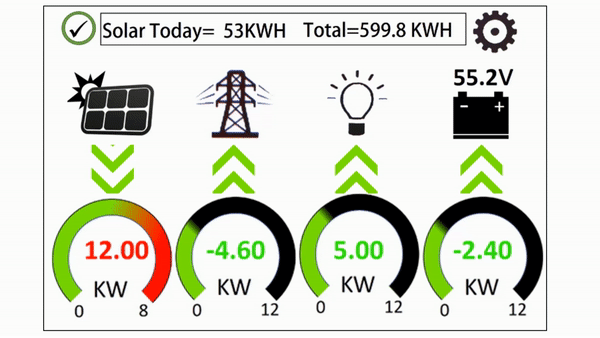top of page

OFF-GRID SYSTEMS
Although they are most common in remote locations without utility service, off-grid solar-electric systems can work anywhere. These systems operate independently from the grid to provide all of a household's electricity. That means no electric bills and no blackouts. People choose to live off-grid for a variety of reasons, including the high cost of bringing utility lines to remote home sites, the appeal of an independent lifestyle, or the general reliability a solar-electric system provides. Two key components are batteries to store energy and an engine-generator which can provide energy during periods of cloudy or inclement weather.
Those who live off-grid often make adjustments to when and how they use electricity, so they can live within the limitations of the energy available. This includes carefully considering the appliances-or loads-in a home which is crucial in off-grid system design. This doesn't necessarily imply doing without, but rather is a shift to a more conscientious use of electricity. The first step is to list the power requirements of every desired appliance and determine the average daily hours each will be used. A load analysis calculates the energy consumed by each appliance, with the ultimate goal of determining the total average daily energy consumed by all loads in the home. This daily consumption value is then used to design a battery bank large enough to store that energy each day and a PV array large enough to produce the energy.




We like to use the Sol-Ark Hybrid Inverters when it comes to Stand-Alone Off-Grid Solar systems.
They can be extended to 72 kW with the 12K inverters and up to 180 kW with the 15K inverters.
They have a broad range of battery types that can be used with these inverters.
bottom of page